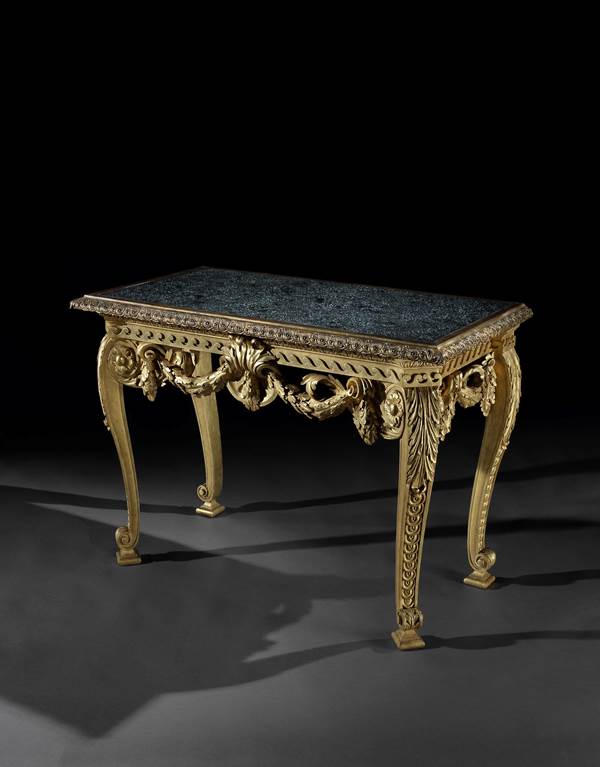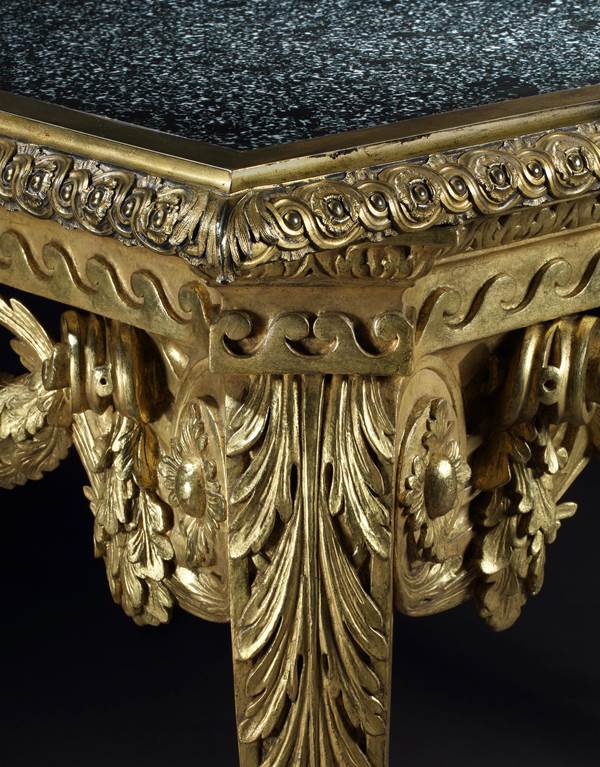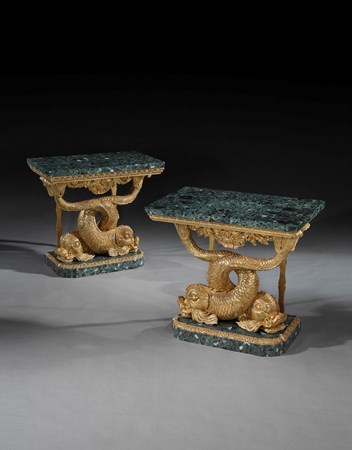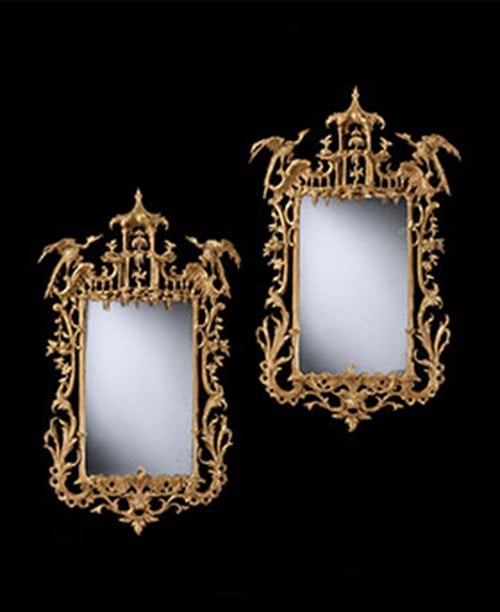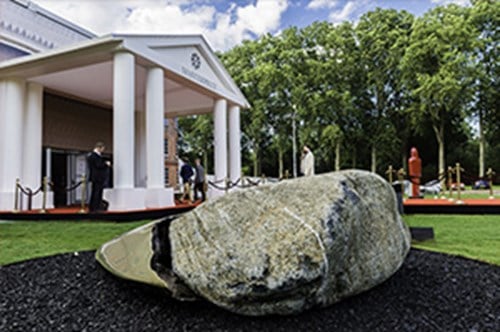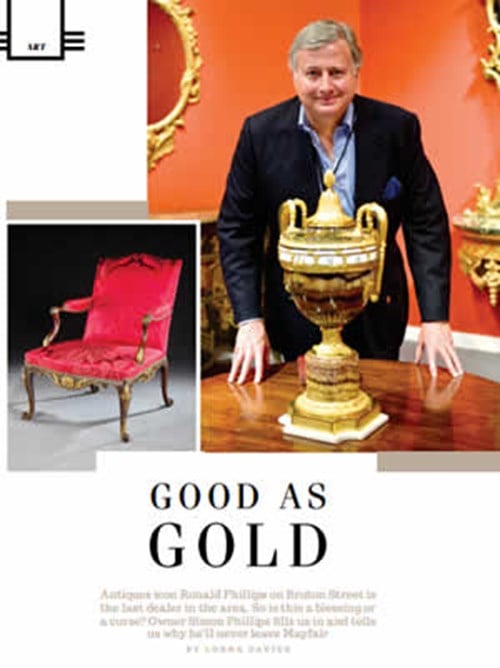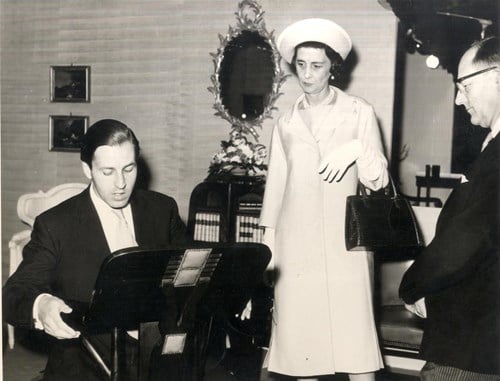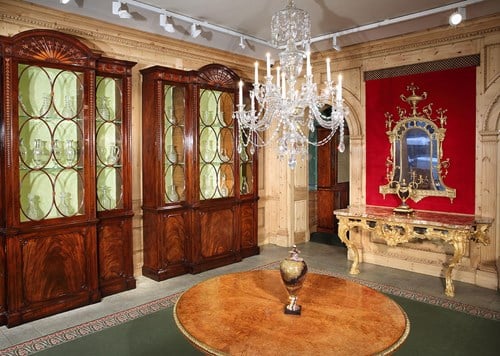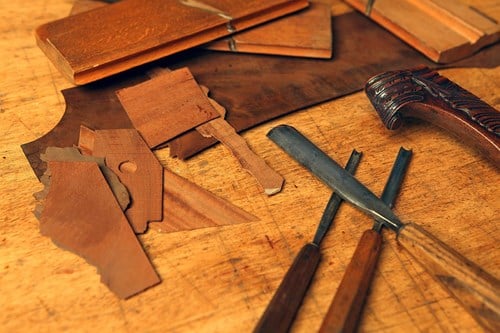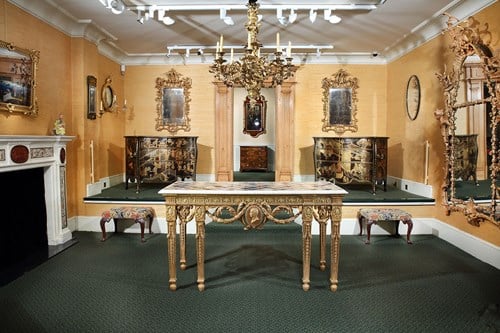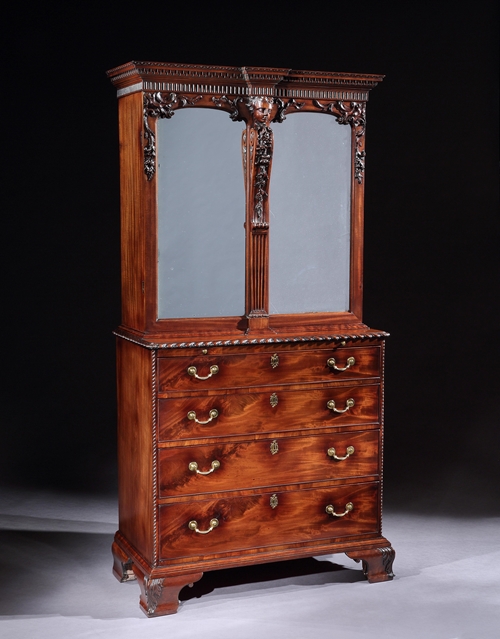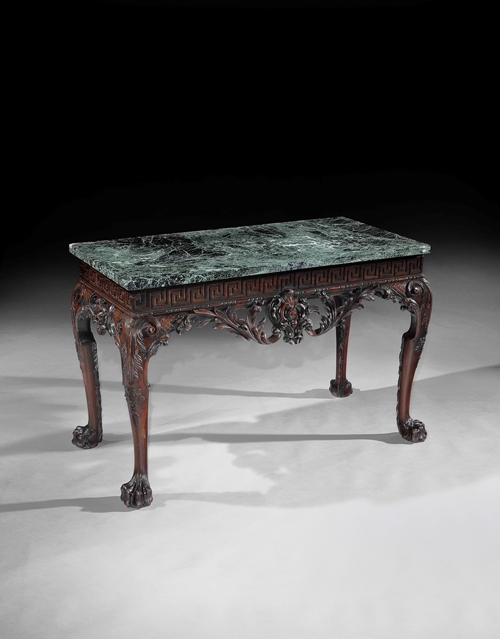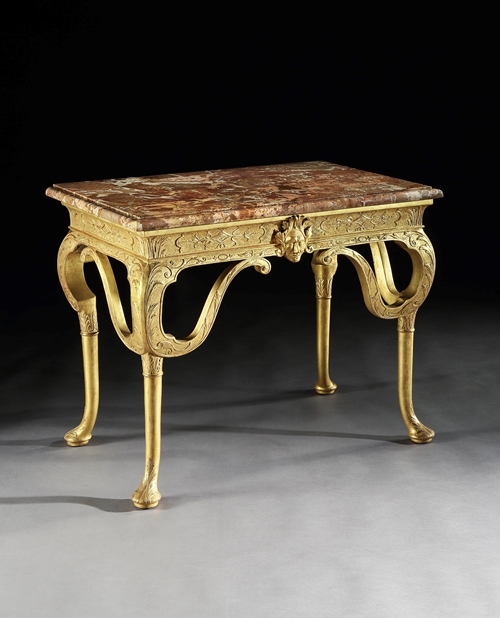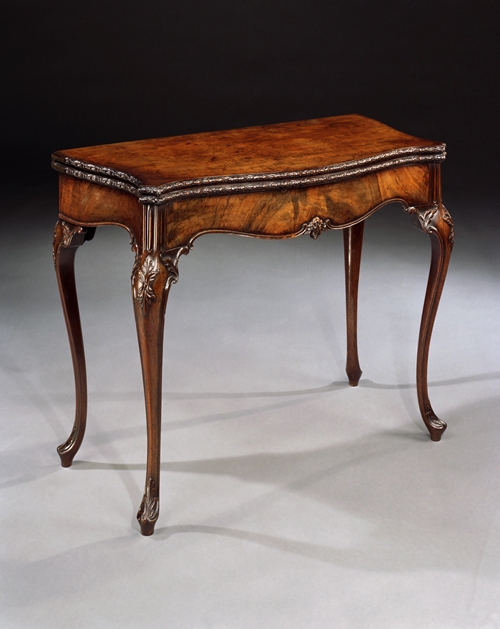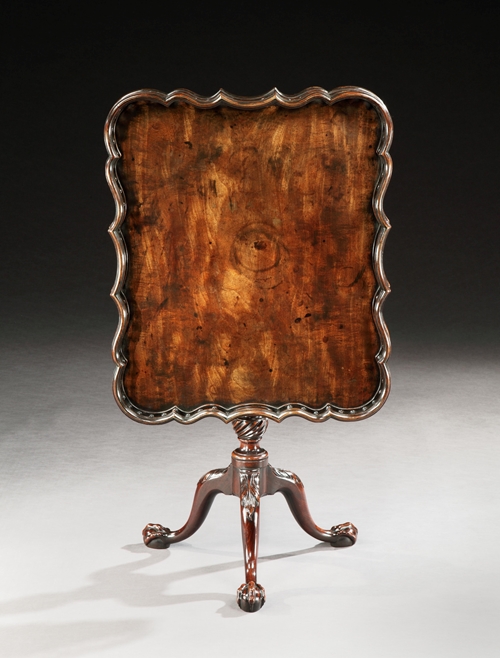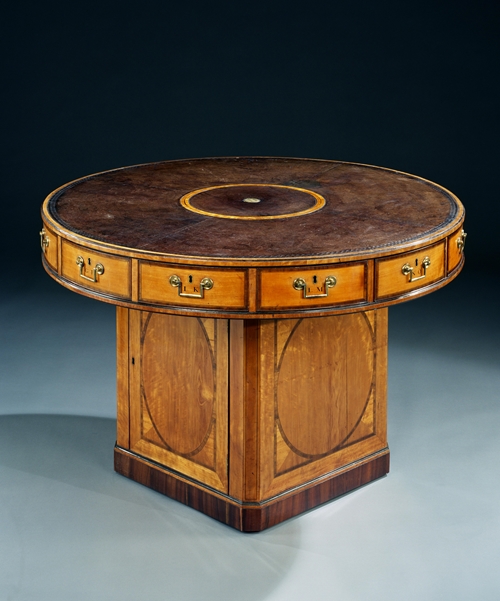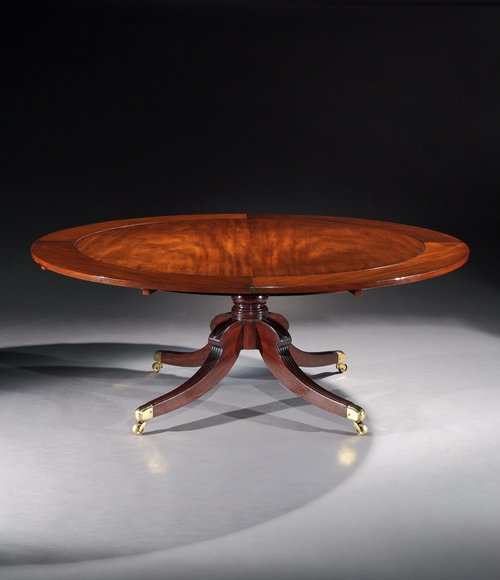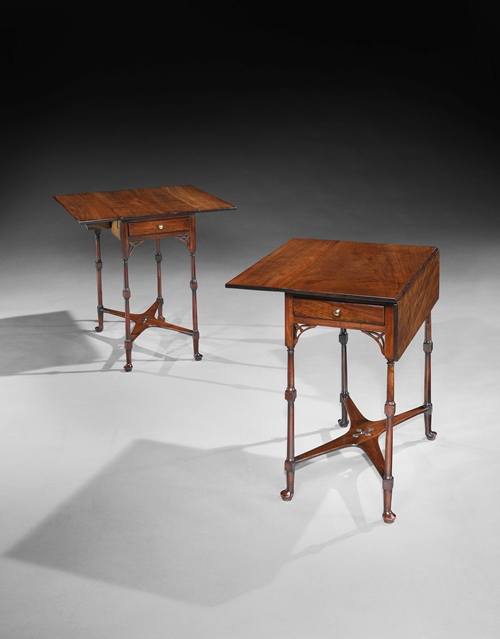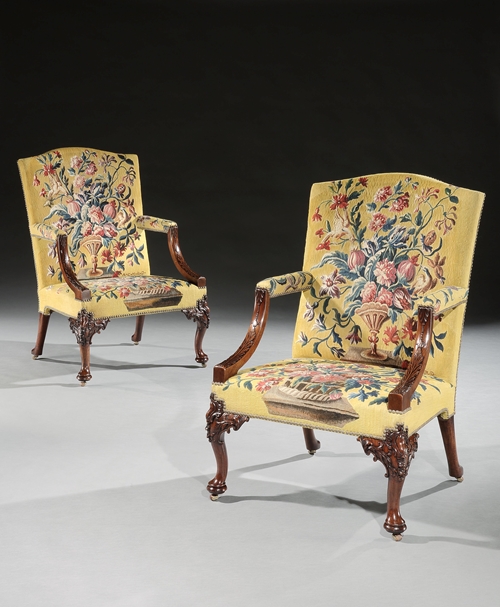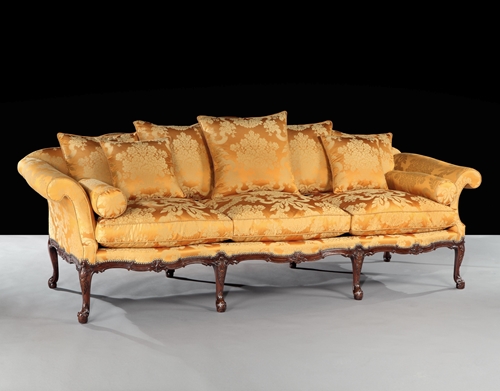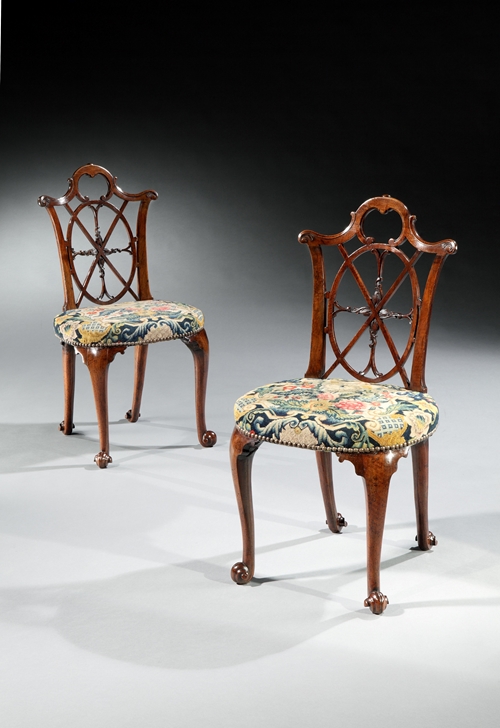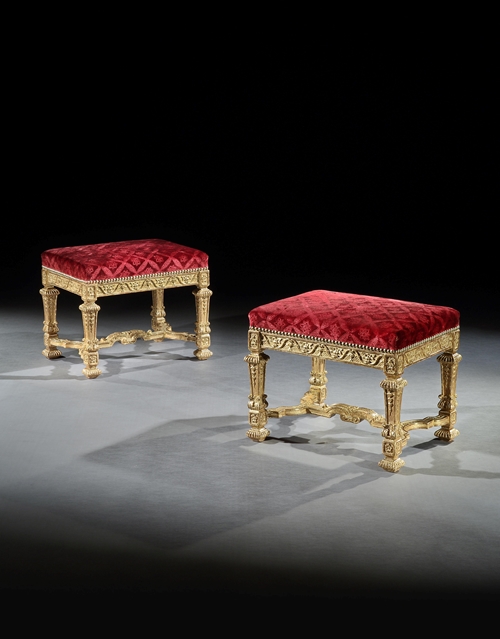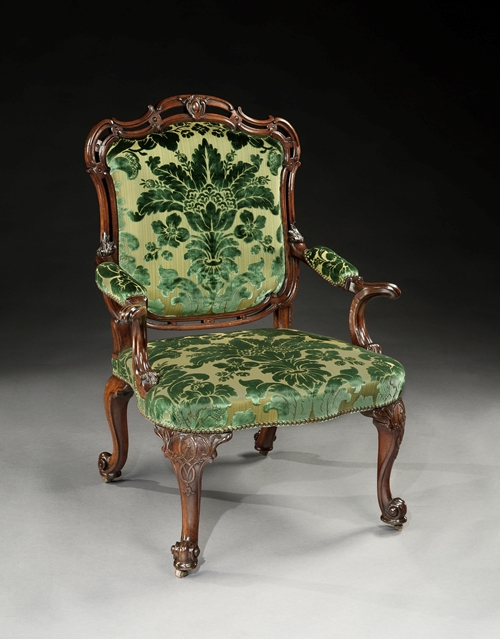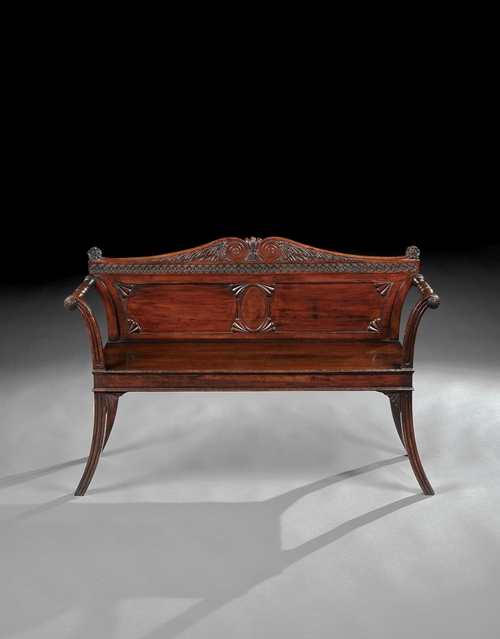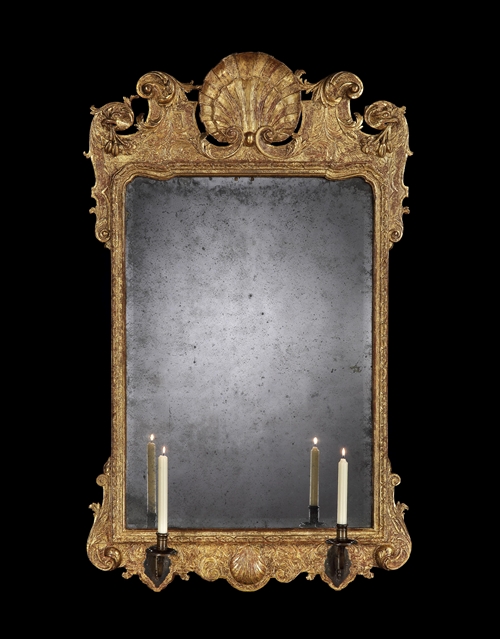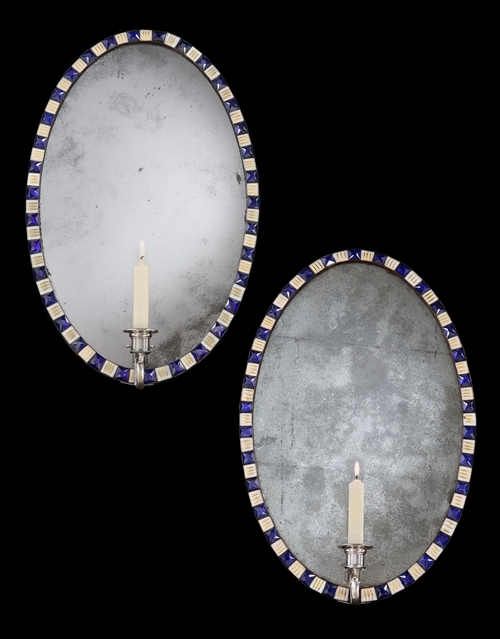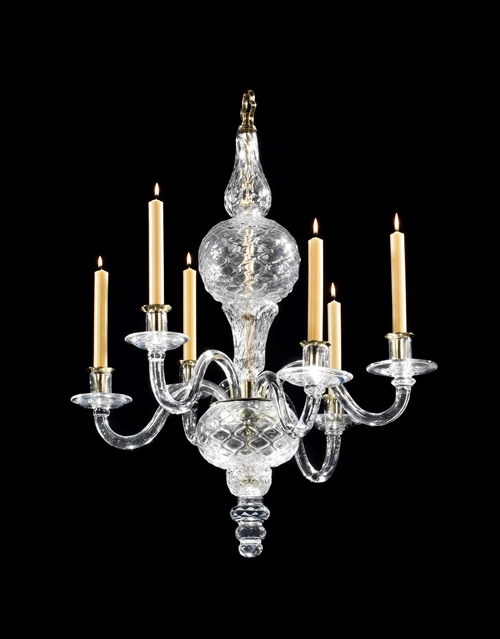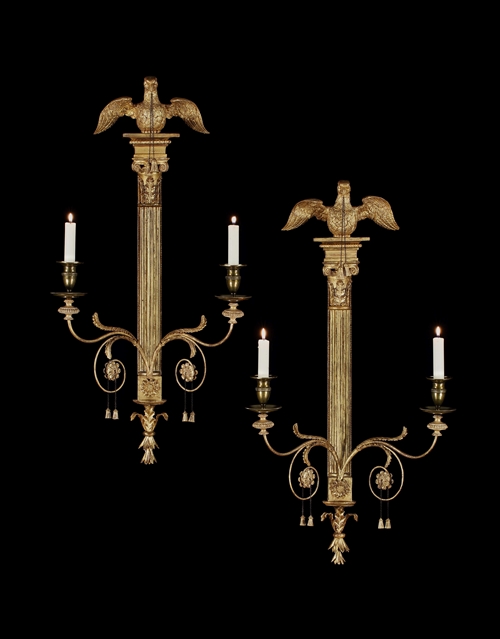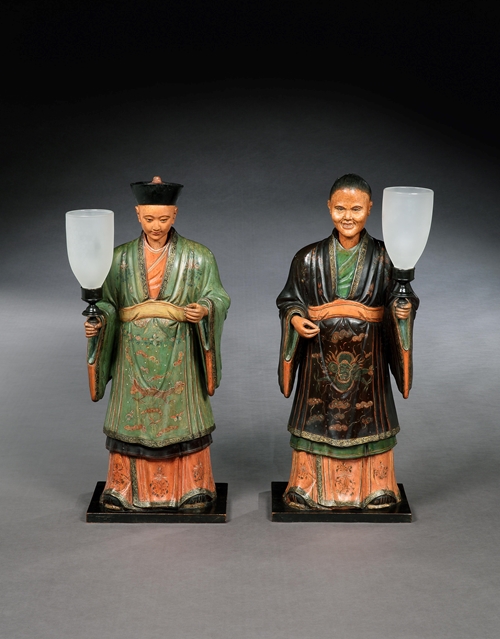A pair of George II giltwood side tables with ormolu mounted porphyry tops, designed by William Kent.
Note: Both porphyry tops and the metalwork on one table are of later date.
The tables appear to be en-suite with another slightly longer table photographed by Country Life in 1921 at Houghton Hall, Norfolk, England. The frieze design of both tables is repeated in the plasterwork decoration of the ceiling of the Great Marble Hall at Houghton. William Kent replaced the architect Colen Campbell in 1725, following Lord Burlington’s recommendation of Kent to Houghton’s owner, Sir Robert Walpole. Kent is responsible for the design of most of the ground floor at Houghton, where he used craftsmen including James Richards, Benjamin Goodison and Thomas Roberts. Any one of them could have been responsible for these tables.
Houghton Hall has undergone many changes over the centuries, and it is possible that the tables were originally intended for Walpole’s London residence, 10 Downing Street, a gift from George II: Walpole stipulated that it should belong to the nation for the use of future prime ministers. The Houghton inventory of 1745, prepared on Walpole’s death, provides only vague descriptions and very basic information. Seven tables are listed in the Coffee Room, for example, but with no details of what they were used for or what materials they were made from.
By 1792, only three tables are listed in the Coffee Room: one larger and one smaller table of the same design, both with slab tops, and a games table. The larger table is described in detail:
One Table foot [supports] a most beautiful and highly polished Granite slab with or molu border
The smaller table of the same design is less precisely described, as its top was probably covered in leather. The inventory lists protective leather covers for some of the tables with more precious tops, and it separately mentions items of particularly high value, mostly sculptures and paintings.
No other tables with fine ormolu borders are mentioned in the remaining rooms, perhaps because the tops were concealed under leather covers or because they were in one of the other Walpole family properties.
Literature: John Cornforth, edited by Tessa Murdoch, Noble Households, 2006, pp. 169 - 205.
-
Provenance
Sir Robert Walpole, Earl of Orford, Houghton Hall, Norfolk, England.
Looking for something similar? YOU MAY ALSO LIKE
YOU HAVE RECENTLY VIEWED ITEMS
- CAN WE HELP YOU?
- +44 (0)20 7493 2341
- [email protected]
